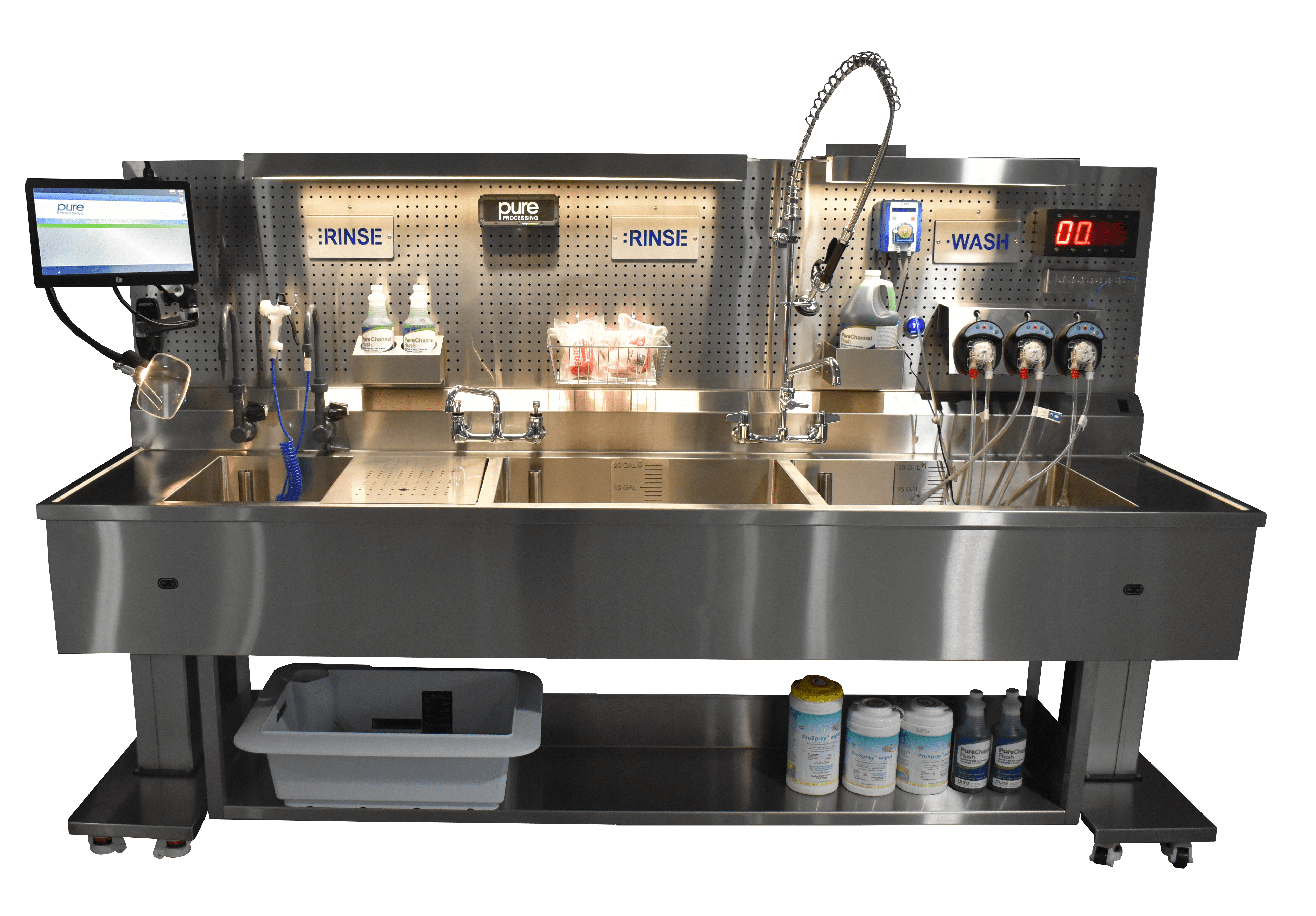As vendor-delivered surgical trays continue to be a vital part of hospital operations, the policies governing how and when those trays arrive, and what happens when they don’t, play an essential role

Tami Heacock
in maintaining surgical readiness, safety, and departmental efficiency. Setting clear, enforceable, and realistic policies isn’t just about logistics; it’s about accountability, patient safety, and preserving strong clinical partnerships.
Pure Processing’s Voice of the Customer (VOC) council met in June 2025 to discuss vendor challenges and accountability. Tami Heacock, System Director of Sterile Processing at Lee Health and VOC member, agreed to expand the conversation and go deeper into policy decisions surrounding loaner operations in sterile processing. Here are six key takeaways for designing and implementing effective vendor policies in sterile processing departments.
Set Realistic and Department-Specific Delivery and Pickup Standards
Not every department can accommodate a one-size-fits-all policy. While industry guidelines may suggest 24-hour delivery standards, departments must consider their own limitations, such as square footage, staffing, and storage capacity. For some facilities, 48-hour delivery windows may offer necessary buffer time for inspection and reprocessing, especially when complex trays or new instrumentation are involved.
Similarly, timely pickup should be enforced. Whether your policy allows 24, 48, or 72 hours for vendors to collect trays post-case, set expectations that align with your actual space and processing workflow, and make sure vendors are aware that SPD is not a storage facility.
Require IFUs, Count Sheets, and Pre-Arrival Documentation
Every incoming tray must be accompanied by complete documentation: current Instructions for Use (IFUs), count sheets, and tray images. These elements are essential for safe processing, particularly if the tray has special sterilization requirements like extended ultrasonic bath times or nonstandard steam cycles.
Without this information ahead of time, SPD teams risk using inappropriate sterilization parameters, which could compromise instrument sterility and patient safety. A policy requiring vendors to provide these details, preferably 48 hours in advance, empowers SPD teams to catch red flags before they cause a delay or an incident.
Align Stakeholders and Secure Cross-Department Buy-In
Vendor policies impact more than just SPD. OR teams, risk management, infection prevention, supply chain, and executive leadership all have a stake in ensuring smooth case flow and safe surgical practices. It’s critical to involve these stakeholders from the start, framing the policy not as a punishment for vendors but as a shared accountability tool.
Involving infection prevention, in particular, can be a powerful accelerator. Their advocacy for proper standards and compliance can be the deciding factor in getting resources approved and policy changes adopted.
Introduce Penalties Thoughtfully… And Back Them with Data
When warning letters and suspensions don’t drive compliance, financial penalties can help. One approach is implementing fines (e.g., $250 per tray) for late deliveries that violate policy. However, these must be developed carefully:
- Legal teams must verify vendor agreements allow for policy enforcement.
- Recordkeeping must be watertight, using timestamps, vendor signoffs, and digital logs or software.
- Exceptions should be documented, rare, and not habitual; what starts as flexibility can quickly become expectation.
The most effective fines are those that rarely need to be used. A single instance of enforcement often reshapes vendor behavior.
Strengthen Communication with Surgeons and OR Teams
Sterile processing can’t function in a vacuum. Late trays affect OR schedules, surgeon satisfaction, and ultimately patient care. Keeping surgeons informed of potential delays, ideally well before the day of surgery, builds credibility and encourages their support in vendor compliance conversations.
Clear, specific, and unemotional communication helps avoid misunderstandings. Instead of saying “all the trays were late,” clarify: “8 of the 13 trays for tomorrow’s 7:30 AM case arrived after the deadline.” Avoid exaggeration and always document interactions to build trust and protect against finger-pointing.
Plan Ahead for Accountability, Not Punishment
Ultimately, the goal of vendor policies is not retribution, it’s consistency and reliability. Vendor relationships should be rooted in mutual understanding, not surprise enforcement. That’s why advance notice, clear documentation, and a transparent appeal or communication process are vital.
If penalties are collected, avoid routing the funds directly to SPD to prevent conflicts of interest. Instead, consider donating to employee assistance programs, hospital foundations, or other neutral entities.
Conclusion
Strong vendor policies don’t just protect surgical schedules, they protect patients. By aligning policy with departmental capabilities, engaging key stakeholders, and using data to support decisions, sterile processing departments can foster vendor accountability while maintaining the collaborative relationships necessary for successful surgical outcomes.
Interested in more VOC content? Click here!
About: Voice of the Customer Committee
The Voice of the Customer Committee is a panel of healthcare and instrument reprocessing professionals who have graciously donated their time to share their expertise and guidance on current challenges faced by the instrument reprocessing community. Through sharing their insights, experiences, and best practices, we have been given the opportunity to share these findings with our readership. We’d like to thank our VOC members for their outstanding input and insights, as well as their time! Thank you for your continued partnership, and all you do.








